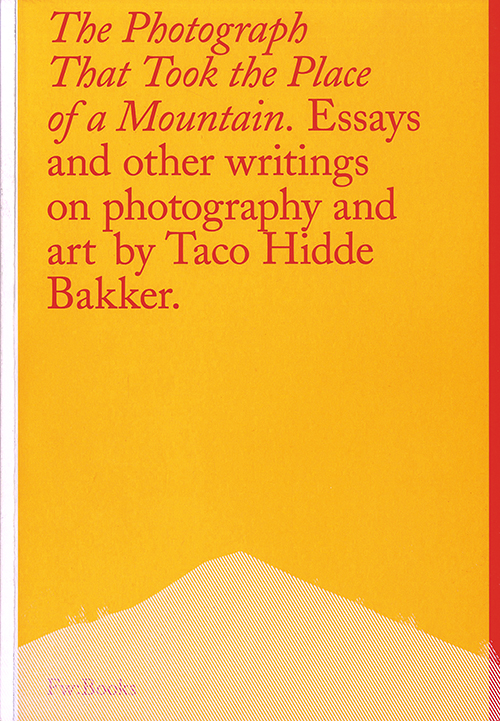| SIMON DENISON IMAGE & TEXT |
| PREVIOUS | NEXT |
THE PHOTOGRAPH THAT TOOK THE PLACE OF A MOUNTAIN Taco Hidde Bakker Fw:Books, 2018 ISBN 978-94-90119-62-1 Pb
Most of the short writings and reviews in this collection have previously appeared in various Dutch and other continental blogs and magazines, including several in Camera Austria International. Nearly all focus on a single exhibition, book or artist, and their critical insights, if sometimes illuminating, tend to be particular and disparate, rather than offering a general theory. The book’s strength lies less in what it says about photography, and more in its testing approach to critical practice. The essays range from straightforwardly journalistic (an interview for BJP), and conventionally deconstructive (an oppositional reading of a project by Jimmy Nelson), to bolder experiments, including a review of a show that Bakker did not visit, an interview in the form of a letter to an artist into which the artist inserted comments, a series of walking interviews with a photographer-flaneur presented as a set of imagistic impressions and a review in the form of an open letter styled as if written to an old friend. Bakker’s critical writing is reflexive: he is explicitly present in his interpretations, and he writes repeatedly of the emotions generated around photography for himself, for audiences, artists, and models. The book can be seen as part of an emerging movement, an ‘affective turn’ in critical writing. ‘Growing older … [I] try to write more freely, in a more poetic mode, aiming for another kind of inspiration … rather than to explain what a photo or photo series is about …’, he writes in one essay. In another, his frustration with criticism’s dominant discursive mode is clear: a direct encounter with a Francesca Woodman photograph is a ‘treasure’ that ‘enables one to forget … all of the many -isms’. This is exploratory work, and the experiments are perhaps not always fully resolved. Some of the writing around affect could benefit from a little more grounding. But for all of us involved in the work of thinking and feeling photography, this book serves as a bracing provocation. |
 |
|---|---|